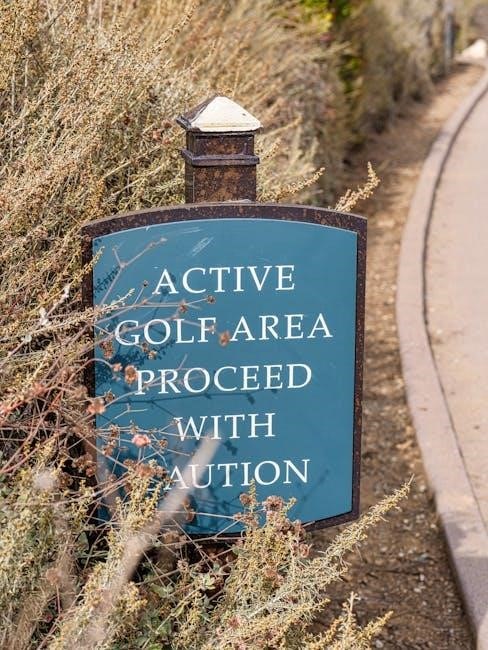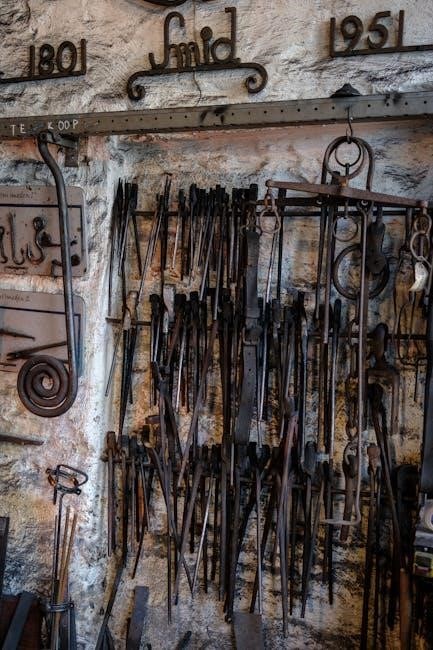Raiding is a core PvP activity in Rust‚ allowing players to break into bases to steal resources‚ weapons‚ and valuables‚ requiring strategy and the right tools.
1.1 What is Raiding in Rust?
Raiding in Rust involves invading another player’s base to steal resources‚ weapons‚ and other valuable items. It is a core PvP activity that combines strategy‚ combat‚ and the use of specialized tools. Players often use explosives like satchel charges‚ rockets‚ or C4 to breach walls and doors. Raiding can also involve direct combat with the base’s defenders. The goal is to infiltrate‚ gather loot‚ and escape undetected or defeated. Successful raiding requires planning‚ teamwork‚ and the right equipment. It is a high-risk‚ high-reward activity that plays a central role in the game’s competitive landscape. Understanding raiding mechanics is essential for both attackers and defenders in Rust.
1.2 Importance of Raiding in Rust
Raiding is a fundamental aspect of Rust‚ driving player interaction‚ competition‚ and progression. It allows players to acquire essential resources‚ weapons‚ and items that might otherwise be difficult to obtain. Raiding incentivizes strategic base design‚ defensive planning‚ and teamwork. For attackers‚ it offers a way to disrupt rivals‚ weaken their economy‚ and gain an advantage. Defenders‚ in turn‚ must adapt and innovate to protect their assets. Raiding also fosters a dynamic and unpredictable gameplay environment‚ encouraging creativity and problem-solving. Whether attacking or defending‚ raiding is a cornerstone of Rust’s PvP experience‚ making it a critical skill for any player aiming to thrive in this survival sandbox;

Understanding Rust Raiding Basics
Rust raiding involves breaking into bases using explosives‚ tools‚ and strategy. It requires understanding building materials‚ weak points‚ and effective use of resources for successful execution.
2.1 What You Need to Know Before Raiding
Before engaging in a raid‚ understanding the fundamentals is crucial. Players must know the resistance levels of different building materials‚ such as wood‚ metal‚ and high-quality metal‚ as they determine the amount of explosives or tools required. Familiarity with explosives like satchel charges‚ C4‚ and rockets is essential‚ as each has unique efficiencies and costs. Gathering intelligence on the target base‚ including weak points and traps‚ is vital for a successful raid. Additionally‚ knowing the right tools‚ such as melee weapons for close combat or ranged weapons for distance‚ ensures effectiveness. Crafting essential items like ammo and explosives beforehand is also critical. Understanding team roles and communication strategies can make or break a raid. Lastly‚ being aware of Rust’s rules of engagement and the ethical implications of raiding helps players navigate the game’s legal and moral boundaries.
2.2 Basic Raiding Terminology
Understanding key terms is essential for effective raiding in Rust. A satchel charge is a powerful explosive used to breach bases‚ while C4 offers precision detonation. Breaching refers to the act of entering a base‚ often through weaker points. Traps are defensive mechanisms like turrets or shotguns to deter raiders. Loot is the valuables acquired during a raid. Exfiltration is the process of safely leaving the area post-raid. Resources include materials like scrap‚ metal‚ and wood‚ crucial for crafting tools. Workbench tiers determine crafting efficiency‚ with higher tiers unlocking advanced items. Familiarity with these terms ensures clear communication and strategic execution during raids.
Preparing for a Raid
Preparing for a raid in Rust involves gathering intelligence on the target‚ selecting the right tools like satchel charges and C4‚ and crafting essential items for a successful raid experience.
3.1 Gathering Intelligence on the Target
Gathering intelligence is crucial before raiding. Use tools like binoculars or a telescope to scout the base’s layout‚ identifying weaknesses such as damaged walls or unguarded entry points. Observe the materials used in construction‚ as this determines the tools needed for breaching. Note the number of traps‚ turrets‚ and potential defenders. Timing is also key—raid when defenders are offline or distracted. Analyze past raid attempts on similar bases to refine your strategy. Utilize online resources‚ like the Rust Raid Calculator‚ to estimate the explosives required based on the base’s design. Accurate intel ensures a well-prepared and efficient raid.
3.2 Selecting the Right Tools and Weapons
Selecting the right tools and weapons is essential for a successful raid. Explosives like satchel charges and C4 are primary for breaching walls‚ while rocket launchers offer long-range damage. Melee weapons‚ such as the salvaged cleaver‚ are ideal for close combat. Choose tools based on the target’s materials—e.g.‚ high-grade walls may require more powerful explosives. Ensure you have enough ammo and consider bringing a flame thrower for clearing traps. Always craft backup weapons and tools to avoid being defenseless. The right arsenal ensures efficiency and minimizes risks during the raid‚ making it crucial to plan and equip accordingly.
3.3 Crafting Essential Items for Raiding
Crafting essential items is vital for a successful raid. Start by crafting explosives like satchel charges and C4‚ which are crucial for breaching walls and doors. A rocket launcher is also a powerful tool for long-range attacks. Additionally‚ craft a flame thrower to clear traps and defenses. Melee weapons‚ such as a salvaged cleaver‚ are essential for close combat situations. Ensure you have ample explosive 5.56 rifle ammo for dealing damage from a distance. Always craft backup tools and weapons to avoid being caught unprepared. Use resources like high-quality metal and scrap to craft these items efficiently. Planning your crafting based on the target’s defenses ensures you’re well-equipped for the raid‚ maximizing your chances of success.

Tools and Weapons for Raiding
Essential tools include satchel charges‚ C4‚ and rocket launchers for breaching‚ while flame throwers and explosive ammo provide versatility. Melee weapons like the salvaged cleaver are crucial for close combat.
4.1 Explosives: Satchel Charges‚ C4‚ and Rockets
Explosives are the backbone of any successful raid in Rust. Satchel charges are cost-effective and commonly used for breaching walls and doors‚ offering a balance between power and resource efficiency. C4 is more potent‚ capable of destroying high-grade materials with precision‚ but requires more resources to craft. Rockets‚ fired from a rocket launcher‚ are ideal for long-range attacks and can demolish heavily fortified structures. Each explosive has unique advantages‚ and understanding their strengths is crucial for optimizing raid strategies. For example‚ rockets are best for high-tier walls‚ while satchel charges excel at softer targets. Crafting these explosives requires specific materials and workbench tiers‚ making them a significant investment for raiders. Proper use of explosives can make or break a raid‚ ensuring quick access to valuable loot.
4.2 Melee Weapons for Close Combat
Melee weapons are essential for close-quarters battles during raids in Rust. The Salvaged Icepick excels at quick takedowns and resource gathering‚ while the Machete offers rapid attacks for finishing off wounded enemies. The Salvaged Axe provides a balance between damage and stamina efficiency‚ making it versatile in combat. These weapons are particularly useful in tight spaces where ranged weapons are less effective. They also conserve ammo‚ allowing raiders to reserve firearms for critical moments. However‚ melee combat is risky‚ requiring precise timing and positioning. Mastery of melee weapons enhances a raider’s versatility‚ making them a formidable opponent in both offense and defense scenarios. They are indispensable for executing stealthy or aggressive strategies during raids.
4.3 Ranged Weapons for Long-Distance Attacks
Ranged weapons are crucial for engaging enemies from a distance during Rust raids. The Rocket Launcher is a powerful tool for breaching reinforced structures‚ while C4 offers precise‚ high-damage explosions. The Beancan Grenade and Explosive 5.56 Rifle Ammo provide versatile options for softening defenses. These weapons allow raiders to weaken bases or eliminate defenders before closing in. The Rocket Launcher costs 500 Scrap to craft‚ making it a significant investment but highly effective. Ranged weapons are essential for controlling the battlefield‚ enabling raiders to dictate the flow of combat. They complement melee and explosive strategies‚ ensuring a balanced approach to breaching and securing bases. Mastering these tools enhances a raider’s ability to execute successful‚ long-distance attacks.
Executing the Raid
Executing a raid involves strategic breaching‚ leveraging tools like satchel charges and rockets to penetrate defenses. Effective teamwork and quick decision-making are crucial for success.
5.1 Choosing the Best Breach Point
Choosing the best breach point is critical for a successful raid. Identify weak points in the base’s structure‚ such as damaged walls‚ undefended doors‚ or low-quality materials. Always prioritize entry points that require minimal resources to breach‚ maximizing efficiency. Use tools like satchel charges or rockets to create openings in fortified areas. Analyze the base’s design to avoid traps and ensure a clear path for your team. Effective breaching often determines the raid’s outcome‚ so careful planning and execution are essential.
- Target damaged or low-tier walls for easier entry.
- Use explosives strategically to minimize resource waste.
- Avoid breaching points with visible traps or defenses.
5.2 Strategies for Successful Breaching
Successful breaching requires coordination‚ strategy‚ and the right tools. Assign roles within your team‚ ensuring someone handles explosives while others provide cover. Use satchel charges or rockets to create entry points efficiently. Always breach at angles to avoid direct fire from defenders. Suppress enemy positions with ranged weapons to minimize resistance. Maintain a reserve of explosives for secondary breaches if needed. Utilize smokes or distractions to disorient defenders during the breach. Stay alert for traps and have an exfiltration plan ready. Effective communication and timing are crucial to ensure a smooth and successful breach.
- Coordinate roles to maximize breach efficiency.
- Use cover and suppressive fire to protect your team.
- Keep reserves for unexpected resistance or additional breaches.
5.3 Dealing with Traps and Defenses
When raiding‚ defenders often employ traps and defenses to protect their bases. Common traps include shotgun traps‚ landmines‚ and turrets. To counter these‚ scout the area beforehand to identify potential threats. Use tools like smoke grenades to block turret vision or disable traps with melee weapons. Stay alert for hidden pressure plates and avoid triggering them. If a teammate triggers a trap‚ provide medical assistance quickly. Consider using explosives to destroy traps or bypass them entirely. Team coordination is key to overcoming defensive mechanisms. Always have a contingency plan to adapt to unexpected traps or resistance.
- Scout for traps before breaching to avoid surprises.
- Use smoke grenades to disable turrets and cameras.
- Stay vigilant for pressure plates and hidden dangers.

Post-Raid Actions
After a successful raid‚ secure the area and gather all loot efficiently. Plan a safe exfiltration route to avoid counterattacks and ensure team safety.
- Secure the perimeter to prevent ambushes.
- Gather all valuable resources quickly.
- Coordinate a safe escape route.
6.1 Securing the Area After a Raid
Securing the area after a raid is crucial to ensure your team’s safety and prevent counterattacks. Start by clearing the perimeter and eliminating any remaining threats. Check for traps or hidden enemies that might have survived the initial breach. Use tools like C4 or rockets to destroy any leftover resources or valuable items to deny the defender the ability to recover. Assign team members to guard key entry points while others gather loot. Ensure all valuables are collected quickly and efficiently. Finally‚ prepare for exfiltration by coordinating a safe exit route‚ avoiding hot zones where reinforcements might arrive.
- Clear the perimeter of threats.
- Destroy leftover resources to prevent recovery.
- Coordinate team roles for efficient looting.
- Plan a safe exfiltration route.
6.2 Exfiltration Strategies
Exfiltration is the final phase of a raid‚ requiring careful planning to ensure your team’s safe escape. Use smoke grenades to create a diversion and obscure enemy vision. Assign a scout to identify potential escape routes and avoid hot zones. Designate a rally point where the team can regroup if separated. Move quickly but cautiously‚ avoiding main roads and open areas where enemies might be patrolling. Consider splitting into smaller groups to reduce visibility. Once clear of the area‚ destroy any stolen resources to prevent tracking. Communicate clearly and maintain formation to minimize the risk of pursuit. A well-executed exfiltration ensures your team retains the loot and survives to raid another day.
- Use smoke grenades for cover.
- Scout escape routes in advance.
- Regroup at a designated rally point.
- Move stealthily and avoid open areas.
Defending Against Raids
Defending against raids in Rust requires designing secure bases‚ using traps‚ and setting alarms. Strategic placement of defenses and resources deters raiders effectively.
7.1 Designing a Raid-Proof Base
Designing a raid-proof base in Rust involves careful planning and strategic construction. Using high-resistance materials like metal fragments and stone is essential to withstand explosives. A peaked roof design can deter climbers‚ while multiple layers of walls and traps create barriers against raiders. Reinforced doors and hinges‚ combined with hidden passages‚ enhance security. Ensure your base has limited entry points and a secure perimeter with alarms to detect intruders early. The tool cupboard is critical‚ as it prevents unauthorized access to your base’s resources. By combining strong materials‚ smart layouts‚ and defensive mechanisms‚ you can significantly reduce the risk of successful raids.
7.2 Setting Up Traps and Alarms
Setting up traps and alarms is crucial for defending your base in Rust. Shotgun traps are highly effective‚ dealing massive damage to intruders‚ while requiring 20 shotgun shells and 10 metal fragments to craft. Alarms can be placed near doors or key areas‚ emitting a loud noise when triggered by proximity or unauthorized entry. Layering traps and alarms creates a robust defense system‚ deterring raiders and alerting you to potential threats. Use the Raid Calculator to optimize trap placement and resource usage. Traps and alarms work best when combined with a well-designed base‚ ensuring raiders face multiple obstacles before reaching valuable resources. This strategic setup enhances your base’s security and discourages potential attackers.

Using a Raid Calculator
A Rust Raid Calculator helps plan raids by determining the tools and resources needed to breach specific structures‚ ensuring efficiency and minimizing wasted materials.
8.1 Benefits of a Raid Calculator
A Rust Raid Calculator offers numerous advantages‚ primarily by optimizing resource usage and minimizing waste. It provides precise calculations for explosives‚ tools‚ and ammo needed to breach specific structures‚ ensuring efficient raids. Players can input the type and number of structures they plan to raid‚ receiving tailored recommendations based on their Workbench level. This eliminates guesswork and reduces the risk of under or over-preparing. Additionally‚ the calculator supports advanced features like gather rate adjustments for modded servers‚ making it versatile for different playstyles. By streamlining the planning process‚ a raid calculator saves time and resources‚ allowing players to focus on strategy and execution. It’s an indispensable tool for both casual and experienced raiders aiming to maximize their loot while minimizing costs.
8.2 How to Use a Raid Calculator Effectively
To use a Rust Raid Calculator effectively‚ start by identifying the structures or items you plan to raid. Input these into the calculator‚ specifying quantities for accuracy. Select your Workbench tier to receive tailored recommendations for explosives‚ ammo‚ and tools. For modded servers‚ adjust the gather rate to match your game settings. The calculator will then provide a detailed breakdown of required materials‚ ensuring you’re well-prepared. Use the reset feature to plan multiple raids efficiently. By leveraging these features‚ you can minimize resource waste and maximize loot. Pairing the calculator with a raid chart or guide further enhances your strategy‚ making it an essential tool for successful raids.

Team Dynamics in Raiding
Team dynamics are crucial in raids‚ requiring clear role assignments and communication. Each member’s expertise ensures efficient execution‚ making coordinated efforts essential for successful raids.
9.1 Importance of Teamwork in Raids
Teamwork is essential for successful raids‚ as it allows players to combine their skills and resources effectively. Dividing roles such as breachers‚ support‚ and scouts ensures efficient execution. Communication and coordination are key to overcoming defenses and avoiding traps. A well-coordinated team can execute strategies seamlessly‚ maximizing loot while minimizing losses. Each member’s expertise enhances the group’s overall effectiveness‚ making teamwork a cornerstone of successful raiding in Rust.
Without teamwork‚ raids often fail due to poor planning or lack of adaptability. Collaborative efforts ensure all members contribute to the raid’s success‚ making teamwork indispensable in achieving raiding objectives.
9.2 Assigning Roles Within the Team
Assigning roles within a team is crucial for effective raid execution. Common roles include the breacher‚ responsible for creating entry points‚ and the support‚ who provides cover and deals with defenses. The scout gathers intel on the target‚ identifying weak points and potential threats. Each role requires specific skills and tools‚ ensuring a coordinated effort. Clear communication and role distribution maximize efficiency‚ reducing risks and increasing loot acquisition. Teams without defined roles often struggle with disorganization‚ leading to failed raids. Assigning roles based on individual strengths enhances overall performance‚ making it essential for successful raiding in Rust.

Advanced Raiding Tactics
Advanced tactics involve sophisticated strategies‚ combining psychological manipulation with resource draining to weaken opponents. These methods require precise planning and coordination for maximum impact in Rust.
10.1 Psychological Warfare in Raids
Psychological warfare in Rust raids involves manipulating opponents’ minds to create fear‚ confusion‚ and uncertainty. Tactics include fake raids‚ spreading misinformation‚ or simulating attacks to provoke defensive mistakes. Players may deploy decoy strategies‚ such as faking breaches or using noise-making tools to distract enemies. Additionally‚ targeting key resources or visible structures can demoralize defenders‚ undermining their confidence. Timing attacks during off-peak hours or when opponents are offline can also heighten pressure. Effective psychological tactics disrupt coordination‚ forcing defenders into panic decisions‚ ultimately weakening their overall resistance. This approach complements traditional raiding methods‚ making it a powerful tool in advanced strategies.
10.2 Economic Tactics to Drain Resources
Economic tactics in Rust raids focus on draining opponents’ resources‚ weakening their ability to defend or recover. This involves targeting high-value materials like metal fragments‚ scrap‚ and fuel‚ often through repeated smaller raids. Players may dismantle structures using tools like the Salvaged Icepick or exploit recycling mechanics to reduce enemies’ stockpiles. Economic warfare also includes destroying infrastructure‚ such as furnaces or workbenches‚ to disrupt production. By systematically depleting resources‚ raiders can create a long-term strategic advantage‚ forcing defenders to allocate resources to rebuild rather than counter-attack. This method is particularly effective in prolonged conflicts‚ as it erodes the enemy’s ability to sustain operations and recover losses.

Legal and Ethical Considerations
Understand Rust’s rules of engagement and ethical dilemmas in raiding‚ ensuring actions align with server rules and moral standards to avoid unfair advantages or unnecessary harm.
11.1 Understanding Rust’s Rules of Engagement
Understanding Rust’s rules of engagement is crucial to avoid penalties and ensure fair play. These rules govern how players interact during raids‚ preventing exploitation and ensuring balanced gameplay. Key guidelines include no offline raiding‚ restrictions on corpse blocking‚ and prohibitions on glitching or hacking. Server-specific rules may further limit certain tactics‚ such as using multiple accounts or exploiting bugs. Violations can lead to in-game consequences‚ including bans or loss of items. These rules aim to maintain a fair environment‚ promoting competitive yet respectful interactions between players. By adhering to these guidelines‚ players can enjoy a balanced and immersive Rust experience. Always check server rules before engaging in any raiding activity to avoid unintended penalties.
11.2 Ethical Dilemmas in Raiding
Raiding in Rust often raises ethical questions‚ as it involves invading others’ bases and potentially destroying their hard-earned resources. Players must weigh the thrill of raiding against the frustration it causes others. While the game encourages PvP interactions‚ some actions‚ like offline raiding or excessive destruction‚ are widely considered unethical. Using exploits or unfair tactics can also harm the community’s trust and enjoyment. Ethical raiders often adopt a “raid‚ don’t wipe” mentality‚ focusing on resource acquisition without unnecessary destruction. However‚ the competitive nature of the game blurs these lines‚ leaving players to decide their own moral boundaries. Balancing fun with respect for others is key to maintaining a positive in-game environment.
Mastering Rust raiding requires strategy‚ teamwork‚ and the right tools. Always plan thoroughly‚ use resources efficiently‚ and adapt to situations. Continuous learning and practice will ensure success.
12.1 Recap of Key Raiding Strategies
Successful Rust raiding hinges on meticulous planning‚ intelligent tool selection‚ and adaptability. Always gather detailed intelligence on your target to identify vulnerabilities. Selecting the right explosives‚ such as satchel charges or C4‚ ensures efficient breaching. Teamwork is crucial; assign roles to maximize effectiveness. Execute breaches strategically‚ focusing on weak points like damaged walls or doors. Stay alert for traps and defenses‚ using countermeasures when necessary. Post-raid‚ secure the area and exfiltrate quickly to avoid retaliation. Utilize tools like the Rust Raid Calculator to optimize resource usage. Continuously refine your tactics and learn from each raid to improve future outcomes. Adaptability and strategic thinking are key to mastering Rust raiding.
12.2 Final Tips for Successful Raids
To ensure raiding success in Rust‚ always prioritize strategy and preparation. Use the Rust Raid Calculator to optimize resource usage and minimize waste. Gather thorough intelligence on your target to exploit weaknesses effectively. Assign clear roles within your team to enhance coordination and execution. Breach points should be selected based on structural vulnerabilities‚ such as damaged walls or doors. Stay patient and adaptable‚ as raids often require quick decision-making. Avoid overcommitting resources to a single target and always have an exfiltration plan. Learn from each raid‚ whether successful or not‚ to refine your tactics. Continuous improvement and a focus on efficiency will elevate your raiding skills in Rust.
- Use tools like the Rust Raid Calculator for precise planning.
- Stay adaptable and patient during raids.
- Learn from every raid to improve future strategies.
